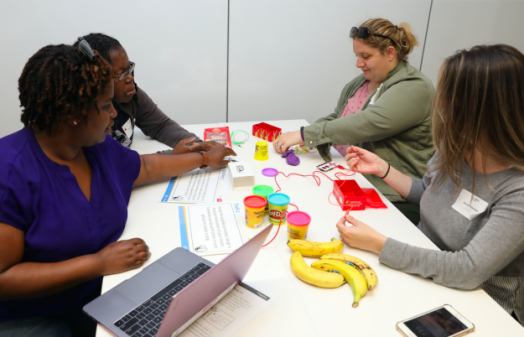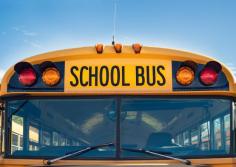Broadband imbalance: Students need internet for future success beyond school, expert says

The conversations around broadband access in schools typically concentrate on enhancing students’ educations and expanding opportunities for their personal success. But the implications of broadband access are much bigger than that, an infrastructure expert at the Brookings Institution told EdScoop in a recent interview.
Broadband is critical to ensuring students can eventually compete in the digital economy, said Adie Tomer, a fellow in Brookings’ Metropolitan Policy Program.
Students are the next generation of workers, after all, so to stay ahead — or just avoid falling behind — that generation has to know how to operate in a digital world, Tomer said.
“We, as a country, argue that the future of our economy is one of being a leader in the digital industrial space, so it’s important that not just our current class of workers, but more importantly, the next class of workers, understand how digital equipment works,” Tomer said.
Coding isn’t just a tool to help kids understand their 8th grade math concepts, and game-based learning isn’t just a way to make dry history lessons more fun. These and other classroom digital learning tools are laying the foundation for what will be expected of students when they join the workforce in a few years, Tomer said.
“With that in mind, making sure kids live in households served by broadband is of utmost importance to the economy. You almost can’t say it enough.”
Tomer recently authored a Brookings report that maps broadband availability and subscription in neighborhoods across the United States. Interactive features in the report allow readers to see, city by city, that broadband is near-ubiquitous in the heart of major metropolitan areas, but in neighborhoods just a few miles outside the city limits, broadband becomes sparse.
Though the report examines broadband through the lens of neighborhoods and cities, the maps “roughly corresponds” to how broadband would be mapped in area schools and school districts, Tomer said.
Based on Brookings neighborhood data, about 6.9 million kids in the United States — most of whom are presumably students — live in low broadband subscription areas, he said. That’s compared to the 6.5 million students that the nonprofit EducationSuperHighway recently reported are still lacking access to high-speed broadband.
Hundreds of thousands of students in the Los Angeles metro area, particularly those in the southern portion, live in neighborhoods with limited broadband subscriptions, Tomer said.
“What does that mean for those kids’ futures, and their future success?” Tomer said. “We’re in a digital age. There are just way too many kids who are living without connections at home.”
The report paints a grim picture, in hues of red and blue, of the rural-urban digital divide in America, and it underlines the reality that the broadband issue is not limited to education. In fact, as more school districts gain access to high-speed internet — 94 percent are connected today — families face the added pressure of getting their homes connected so students can hop back online and continue their schoolwork when they’ve left the classroom for the day. That, in essence, is the homework gap.
“To be able to access all the benefits of technology, you really need a connection both in school and at home,” Tomer said.
That’s why, according to him, the U.S. should consider mandating broadband expansion. “It’s rapidly becoming a central infrastructure, and if it’s a central infrastructure, there should be a mandate. … [But] there’s absolutely no debate, no conversations, around this. We’re not even sure what our position is on this as a country.”
Throughout the coming months, Tomer and his co-authors, Elizabeth Kneebone and Ranjitha Shivaram, will unpack some of the data from their new report in several Brookings blog posts. In the posts, they will examine more closely what this broadband distress means for schools, Tomer said.




